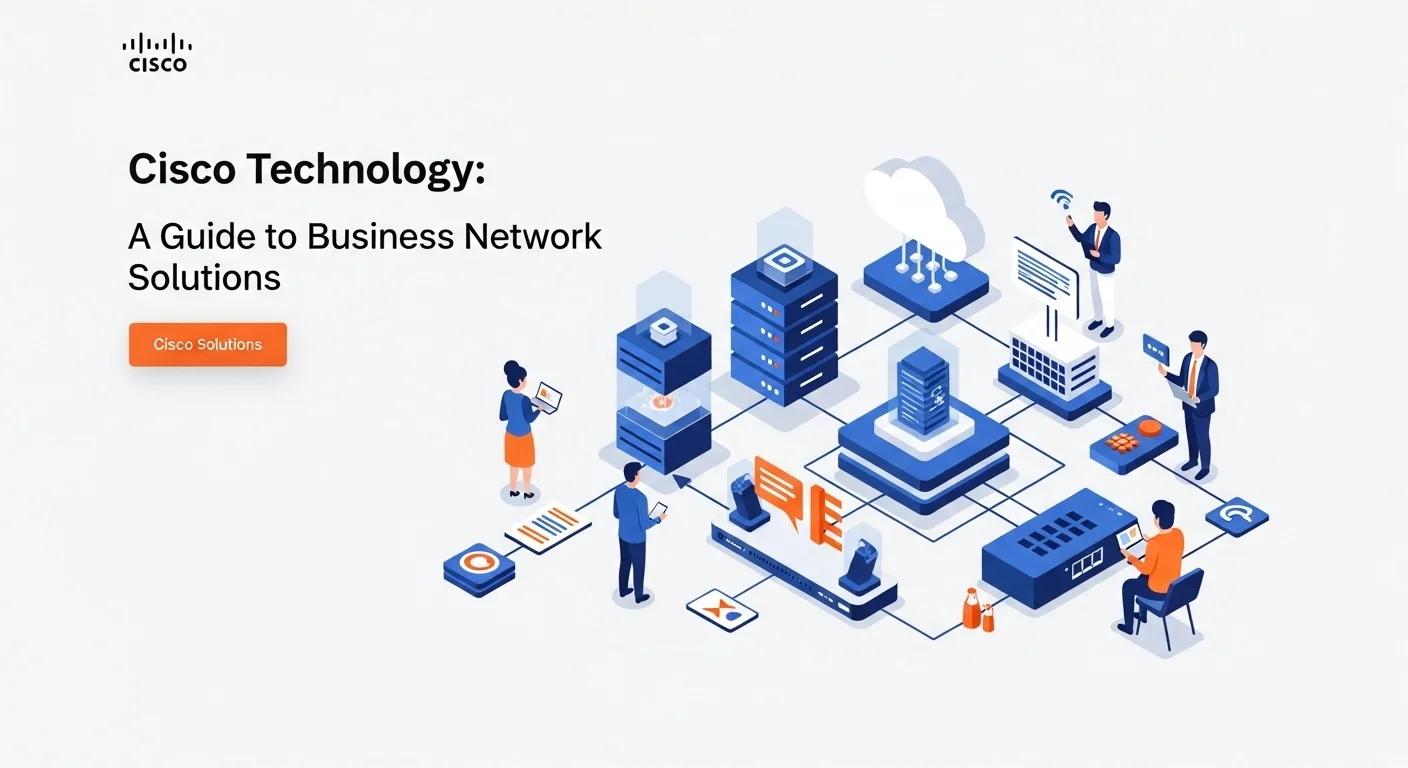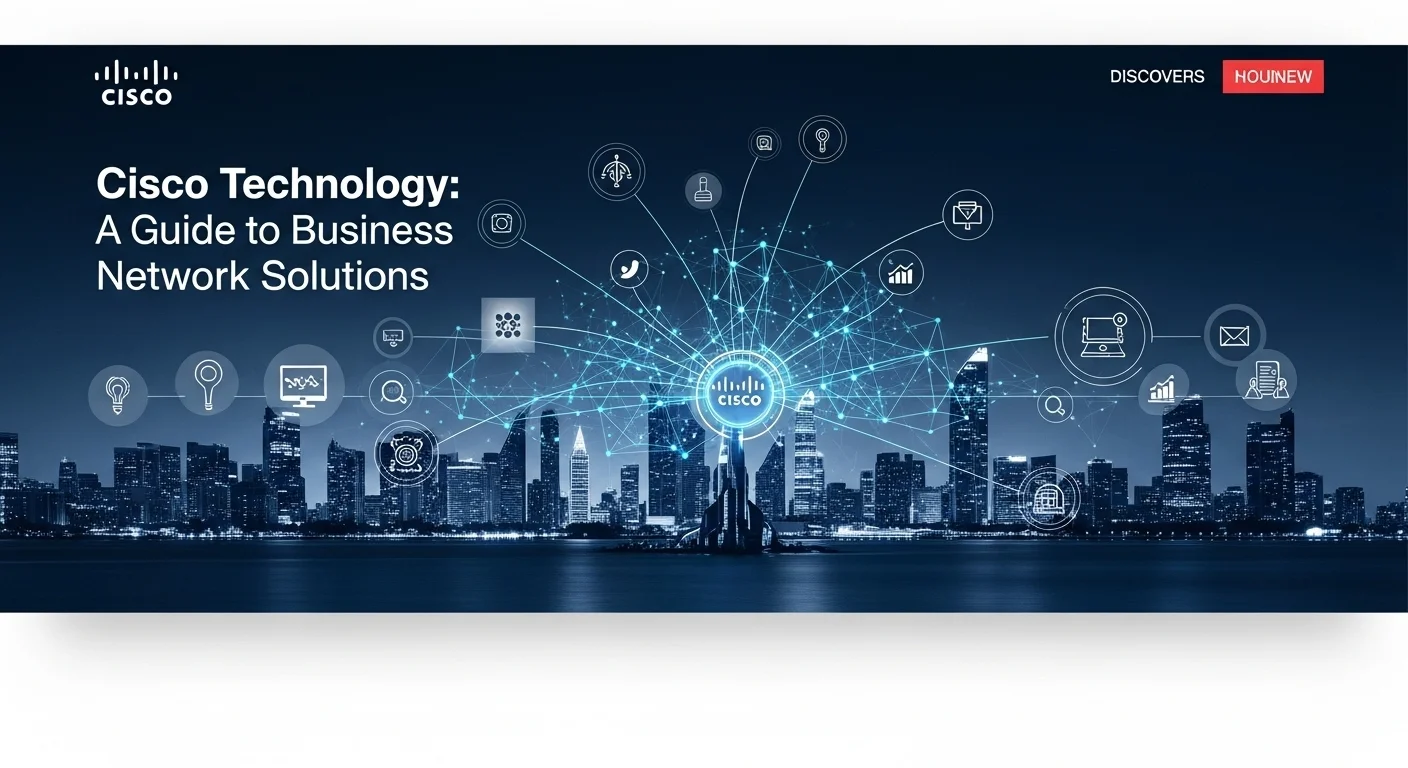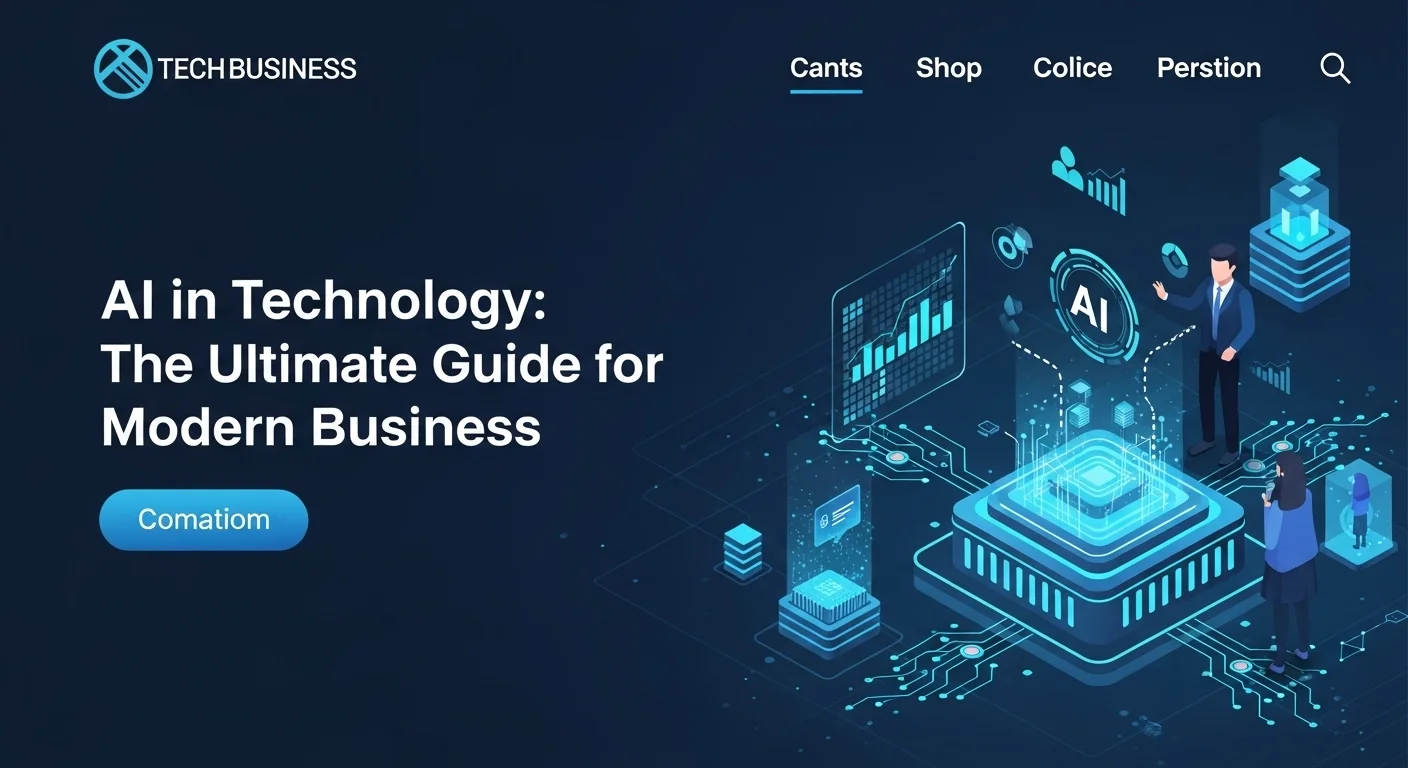Cisco Explained: How to Build a Stronger, Safer Business Network

Executive Summary
In my years working with businesses of all sizes, I've seen one constant: the network is the central nervous system. And more often than not, Cisco is the name behind it. It's the plumbing of the internet, the hardware and software that quietly powers our connected world. For anyone in business or tech, getting a handle on what Cisco offers isn't just academic—it's essential for smart decision-making. This article is my attempt to cut through the jargon and show you what matters. We'll explore how Cisco builds secure networks, helps businesses navigate the cloud, and tackles the unique challenges of protecting industrial systems. I'll break down concepts like Cisco Meraki for simple cloud management and SecureX for integrated security, giving you a clear picture of how these tools connect, protect, and streamline operations in our complex digital world.
Table of Contents
Table of Contents
- What is Cisco and Why Does It Matter for Your Business?
- The Building Blocks of Cisco's Strategy
- Protecting Your Digital Front Door: Cisco Network Security
- Securing the Factory Floor: Cisco OT Security
- Making Networks Simple: Cisco Cloud Networking
- Navigating the Cloud Maze: Cisco's Multi-Cloud Strategy
- Real-World Wins: How Businesses Use Cisco
What is Cisco and Why Does It Matter for Your Business?
In the world of technology, some names are so fundamental they're like the air we breathe. Cisco is one of them. I remember my first time configuring a Cisco router—it felt like I was being handed the keys to the internet itself. At its heart, Cisco builds the infrastructure that makes digital communication possible. Its routers and switches are the tireless traffic cops of the digital age, directing the flow of data that makes up our emails, video calls, and everything we do online. This role alone makes Cisco a giant, touching every industry from tiny startups to global corporations. But its importance goes deeper than just hardware; Cisco is a driving force in making networks smarter, more secure, and more automated.
For any business today, a solid, secure network isn't just a nice-to-have; it's the foundation for everything. It's what connects your team, protects your data, and serves your customers. As we've all shifted towards remote work, cloud apps, and the Internet of Things (IoT), our networks have become incredibly complex and, frankly, more vulnerable. This is where I've seen Cisco truly shine. They don't just sell you a box; they offer an integrated system designed to handle the messy reality of modern IT. Their approach ensures every part of your network—from a laptop in a home office to your cloud servers—works together safely and smoothly. This peace of mind is why so many businesses rely on Cisco to build their digital future.
The Building Blocks of Cisco's Strategy
To really get what Cisco is about, you need to understand the main pillars of its strategy. Think of these as interconnected areas that, together, create a complete support system for a modern company.
Protecting Your Digital Front Door: Cisco Network Security
Network security is priority number one, and it's an area where Cisco has been a leader for years. We've moved way beyond simple firewalls. Today, it's about seeing and stopping threats everywhere. I've worked with companies that have implemented Cisco's multi-layered defense, and it's impressive. Tools like Cisco Secure Firewall, Umbrella, and SecureX work together to create a shield around the business. They provide a clear view of all network activity, use threat intelligence from Cisco Talos (one of the best threat research teams on the planet), and automate responses to stop attacks in their tracks. The whole point of their network security philosophy is to protect your people, devices, and data, no matter where they are.
Securing the Factory Floor: Cisco OT Security
This is a fascinating and critical new frontier. For years, the networks running manufacturing plants, power grids, and transportation systems (Operational Technology, or OT) were completely separate from the office IT networks. But now, they're converging to improve efficiency. While that's great for business, it opens up critical infrastructure to cyberattacks. I've seen the concern on the faces of plant managers—a cyberattack could mean shutting down production or, worse, a safety incident. Cisco has stepped in with tools like Cyber Vision, which gives you visibility into what’s happening on your industrial network. It identifies all your OT equipment, learns how it normally communicates, and flags anything that looks suspicious. These solutions are built to bridge the gap between the 'carpeted world' of IT and the 'concrete floor' of OT, keeping industrial processes safe.
Making Networks Simple: Cisco Cloud Networking
Cisco Meraki is the star player here, and it was a game-changer when it came out. I’ve helped small businesses with multiple locations deploy Meraki, and their reaction is always the same: amazement at the simplicity. It moves network management completely to the cloud. You can manage all your switches, Wi-Fi access points, and security from a single, easy-to-use web dashboard. This makes life so much easier, especially if you don't have an IT expert at every location. For retail chains or school districts, this kind of cloud-managed networking is a lifesaver. It’s a perfect example of the industry's shift towards smarter, software-driven networking that just works.
Navigating the Cloud Maze: Cisco's Multi-Cloud Strategy
Let's be clear: Cisco isn't trying to be the next Amazon Web Services (AWS) or Microsoft Azure. Instead, it's the ultimate enabler for businesses that use a mix of different clouds. The reality for most companies I work with is a hybrid world: some stuff on-premise, some in a private cloud, and services from multiple public cloud providers. Cisco's strategy is to give you the tools to connect, secure, and manage this complex environment. Their cloud strategy is all about consistency. With technologies like Cisco Intersight, you can manage your infrastructure in your data center and in the cloud from one place. Tools like AppDynamics and ThousandEyes let you see exactly how your applications are performing for your users, no matter where those apps are hosted. This approach helps businesses avoid getting locked into one cloud vendor and ensures everything runs securely and efficiently.
Real-World Wins: How Businesses Use Cisco
The best part is seeing how this technology translates into real business value. A retailer can use Meraki to manage Wi-Fi in hundreds of stores and get insights into customer traffic. A manufacturer can use Cisco's OT security to prevent a cyberattack from halting its production line. A bank can use a robust Cisco network security setup to protect customer data and meet tough regulations. The benefits are clear: reliability, top-notch security, and the ability to scale as your business grows. Cisco invests heavily in innovation, so you’re always getting access to the latest tech. Plus, the huge community of Cisco-certified professionals and partners means you can always find help. It's this combination of powerful technology and strong support that makes Cisco such a critical partner for any business today.

A Deeper Dive into Cisco's Technology and Business Solutions
To truly harness the power of Cisco, you need to look under the hood. It’s one thing to know what the products do, but understanding how they work is what allows you to make strategic decisions. This guide is for the tech leaders and IT pros who need to go beyond the marketing slides. We'll get into the technical details of Cisco's core solutions, see how they apply in the real world, and honestly assess how they stack up against the competition. Let’s break down the mechanics of Cisco's approach to security, cloud, and everything in between.
The Technical Methods: How It All Works
Let’s get a bit nerdy. When we talk about Cisco network security, we're talking about an integrated system. Your first line of defense is often a Cisco Secure Firewall. Technically, this isn't just a gatekeeper; it's a deep inspector that analyzes the content of your traffic, blocks intrusion attempts, and identifies malware. It understands applications and users, not just ports and protocols. Then you have Cisco Umbrella, which I often describe as a 'pre-crime' security tool. It works at the DNS layer, the internet's phonebook. Before your computer even connects to a malicious site, Umbrella steps in and blocks the request. It's incredibly effective. For your computers and servers, Cisco Secure Endpoint acts as a security guard, constantly watching for suspicious file activity to catch anything that slips through. The real magic is how all these parts report back to Cisco SecureX, a single platform that stitches all the alerts together, giving you a clear story of what's happening and helping you respond faster.
In the specialized world of Cisco OT security, the approach is necessarily different. You can't just go probing and scanning sensitive industrial equipment. The core tool, Cisco Cyber Vision, works passively. It connects to the network and simply listens. Using Deep Packet Inspection (DPI) designed for industrial protocols (like Modbus or Profinet), it builds a detailed map of all your assets—PLCs, controllers, sensors—and learns their normal conversation patterns. If a PLC suddenly gets a command from an unknown source, Cyber Vision flags it as an anomaly. It also checks your equipment against a database of known vulnerabilities. This intelligence can then be used by your IT security tools to automatically create rules that isolate the OT environment, stopping threats from crossing over.
For Cisco cloud networking, the secret sauce behind Meraki is its cloud controller. Every Meraki device you buy—a switch, an access point—is built to 'call home' to the Meraki cloud as soon as it's plugged in. It downloads its configuration and just starts working. As an administrator, you never have to touch a command-line interface. Everything is done through an intuitive web dashboard. I’ve used it to run remote diagnostics, like cable tests or packet captures, for a client hundreds of miles away. All the management data is sent securely to the cloud, but your actual user traffic stays local for speed. It's this architecture that makes managing a network across dozens of sites feel as easy as managing one.
When it comes to Cisco cloud computing and its broader cloud strategy, the core technical concept is orchestration. Cisco's goal is to be the glue for your multi-cloud world. A great example is Cisco Intersight. It's a SaaS platform that lets you manage your servers and systems, whether they're in your own data center or in a public cloud, all from one place. For connectivity, Cisco SD-WAN is key. It creates a smart, secure network layer over any internet connection (broadband, 5G, etc.) and intelligently routes your application traffic. If your Microsoft 365 traffic is slow over one link, it will automatically switch to a better one. Add in tools like AppDynamics and ThousandEyes, which maps how your applications work, and ThousandEyes, which monitors the internet's health, and you have a complete toolkit to manage, secure, and optimize your entire hybrid cloud setup.
Business Techniques and Making the Right Choice
From a business perspective, buying Cisco isn't a one-time transaction; it's a long-term strategy. The smart way to approach it is to think about the total cost of ownership (TCO). A Cisco switch might cost more upfront than a competitor's, but when you factor in its reliability, integrated security, and the time you save on management, it often comes out cheaper in the long run. I always advise clients to invest in training. The Cisco Networking Academy and certifications like the CCNA are invaluable. A team that knows how to use the tools properly will get you a much better return on your investment.
How does Cisco compare to others? In networking, its biggest rival is Juniper, which is also excellent, especially in high-performance environments. In security, companies like Palo Alto Networks and Fortinet are fierce competitors, often innovating quickly. Cisco's advantage has always been the sheer breadth and integration of its portfolio. Being able to get your networking, security, and collaboration from a single strategic partner simplifies things immensely. For cloud-managed networking, Aruba (an HPE company) is Meraki's main competitor. The choice there often depends on specific features and what your team is already comfortable with. My advice is always the same: Cisco's greatest strength is its ability to provide a complete, integrated architecture. For many businesses, that simplicity and cohesiveness is the winning factor.

Tips and Strategies to Maximize Your Cisco Experience
Getting your Cisco gear up and running is just the beginning. To truly get your money's worth, you need to be proactive. Over the years, I've developed a playbook of best practices and essential tools that help turn a Cisco network from a simple utility into a strategic asset for the business. This isn't just about technical settings; it's about adopting a mindset of continuous improvement to ensure your infrastructure can support your goals now and in the future.
My Go-To Best Practices for Implementation and Management
Let's start with Cisco network security. The golden rule is defense-in-depth. First, lock down your devices. My first piece of advice to any client is to change the default passwords immediately. It sounds basic, but you'd be surprised. Use strong, complex passwords and enable multi-factor authentication (MFA) everywhere you can. Cisco Duo is fantastic for this—it's simple to use and incredibly effective. Next, segment your network. Use VLANs to create separate zones. Your guest Wi-Fi should never, ever be on the same network as your corporate data. This contains any potential breach. Finally, stay on top of updates. Cisco regularly releases patches for security flaws. Don't let this slide; automating your patch management is a lifesaver.
When it comes to Cisco OT security, the most important thing isn't a piece of technology—it's getting your IT and OT teams to talk to each other. These teams come from different worlds. IT worries about data; OT worries about keeping the production line running safely. You need a unified strategy. The best technical practice is to start with discovery. You can't protect what you can't see. A tool like Cisco Cyber Vision will map out your industrial environment without disrupting anything. Once you have that map, you can create security zones to control traffic between the plant floor and the office network, which is a cornerstone of industrial security.
If you're using Cisco cloud networking with Meraki, my top tip is to master the dashboard. Use templates. If you have multiple sites, you can create a single template to standardize settings, which saves an enormous amount of time and prevents mistakes. Dig into the traffic analytics. They provide a goldmine of information about how your network is being used, helping you spot issues before your users do. And turn on the built-in security features! Meraki's integration with Umbrella and AMP gives you powerful protection at the edge. Also, set up automated alerts for critical events, like a key switch going offline. It's your early warning system.
For your Cisco cloud computing and multi-cloud strategy, the best practice is to form a dedicated team, often called a Cloud Center of Excellence (CCoE). This group sets the rules and best practices for how your organization uses the cloud. To make your Cisco cloud strategy truly work, you need deep visibility. Don't just use tools like AppDynamics and ThousandEyes when something breaks; use them proactively to monitor user experience and application health. I also strongly recommend adopting infrastructure as code (IaC). Using automation tools to deploy and manage your cloud resources reduces human error and makes your operations much more agile.
Essential Business Tools and Real-World Stories
Beyond the core products, Cisco offers tools that can transform your operations. For on-premise networks, Cisco DNA Center is the command center, using AI to automate tasks and proactively find and fix problems. For modern collaboration, Cisco Webex is more than just video meetings; it's a complete platform for messaging and calling that's essential for hybrid work. And for securing your remote employees, Cisco Secure Access is a SASE solution that combines networking and security into a single cloud service to protect users wherever they are.
I've seen these strategies make a huge difference. I worked with a large university that used Cisco's software-defined networking to manage its massive campus. They automated network access for students, staff, and thousands of IoT devices, which drastically cut down on their IT team's workload. Another client, a manufacturing firm, implemented Cisco OT security after a malware scare shut down production. By getting visibility and segmenting their network, they secured the plant and improved stability. A retail chain I consulted for used Meraki to launch new stores incredibly fast. The plug-and-play setup meant a new store's network was online in hours, not days. These stories show that with the right strategy, Cisco technology solves real, critical business problems. For anyone looking for more detailed guidance, the official Cisco guide on network security is an excellent resource for building a secure foundation.
Expert Reviews & Testimonials
Sarah Johnson, Business Owner ⭐⭐⭐
The information about Cisco is correct but I think they could add more practical examples for business owners like us.
Mike Chen, IT Consultant ⭐⭐⭐⭐
Useful article about Cisco. It helped me better understand the topic, although some concepts could be explained more simply.
Emma Davis, Tech Expert ⭐⭐⭐⭐⭐
Excellent article! Very comprehensive on Cisco. It helped me a lot for my specialization and I understood everything perfectly.



